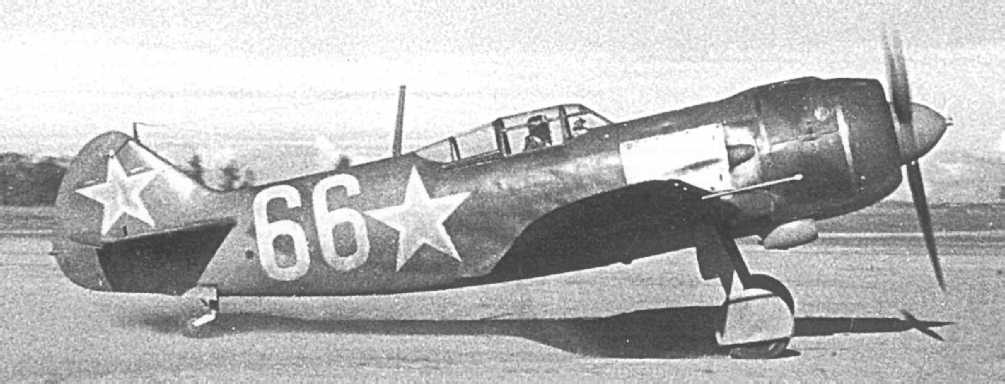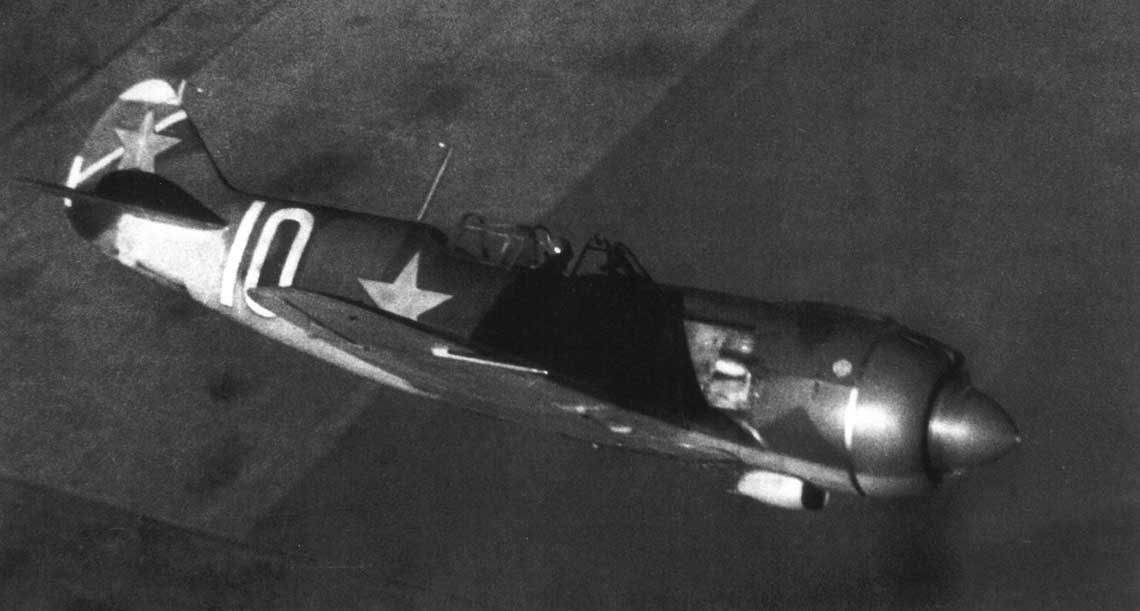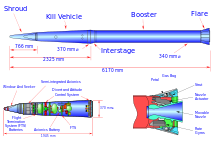
Lavochkin La-5

Single-seat fighter La-5 of the Great Patriotic War.
The Soviet single-engine single-seat fighter La-5 of the Great Patriotic War was developed at the design bureau of Semyon Alekseevich Lavochkin as a refinement and successor to the LaGG-3, a wooden fighter equipped with an M-shaped liquid-cooled engine. 105 inline engine. The new aircraft differed from the previous version mainly in the new M-82 radial engine.
In the first half of the Great Patriotic War, the main problem of Soviet fighters was the lack of appropriate engines and the poor quality of their manufacture. The insufficient power of the available propulsion systems did not allow obtaining the required characteristics - high flight and climb speeds necessary to establish an equal fight with the enemy. Therefore, a little more needs to be said about the pre-war Soviet engines themselves.
Until the end of the 20s, the Soviet aircraft engine industry developed very slowly. During this period, only one really successful engine was designed and it was the stellar M-11 M-1892 by Arkady Dmitrievich Shevchenov (1953-4), which was built at plant No. 1924 (founded by the French company Salmson before the World War). I am in Moscow. Since 1921, A. D. Shvetsov, a graduate of the Moscow State Technical School in 11, became the chief engineer of this plant. However, in fact, he only supervised the development of the engine, and Nikolai Vasilyevich Okroshenko was its actual designer. Five-cylinder M-100 with a power of 2 hp It was intended for training aircraft and is best known for the legendary Po-1930 “maize” (this engine was produced in the USSR in 1952-XNUMX).
The first original Soviet high-power engine was the M-34, developed by Alexander Alekseevich Mikulin (1895-1985), the grandson of the famous aerodynamicist Nikolai Evgenievich Zhukovsky. Although he never graduated from the Kyiv Polytechnic Institute, interrupted by the outbreak of the First World War, in 1923 he became a research assistant at the Automobile and Engine Research Institute in Moscow, where he became an aircraft engine designer two years later. Here in 1928 he began work on a 12-cylinder water-cooled V-engine. In 1930, he moved with his project to the Institute of Aircraft Engines (later the Central Institute of Aircraft Engines), which was also located in Moscow, not far from Motor Plant No. 4. The M-34 engine was tested for dynamometer in 1932. l gave takeoff power of 45,8 hp. The starting point for the development of the M-800 was the German BMW VI engine, produced in the USSR as the M-34, which, however, had a larger volume per liter due to the larger piston stroke in the left row, due to the use of the main connecting rods in one row and the driven connecting rods in a different. The M-17 had the same connecting rods and the same piston stroke in both rows. Connecting rods M-34 (BMW VI) were used in the next model AM-17 (35 hp), the displacement of which was thus increased to 1200 liters, and the left bank of cylinders again had a longer stroke than the right row. This engine in the production version of the AM-36,8A produced 35 hp. It should be emphasized here that the development of the M-1350, the first successful Soviet high-power aircraft engine, brought recognition to A.A. Mikulin, and from that moment his engines began to be designated as AM-34, after his initials, and not the standard M from the engine. AM-34A, produced at plant No. 35 in Moscow (created as a result of the merger of engine plants No. 24 and No. 2, both Moscow) was used mainly on MiG-4 fighters (also on Pe-3 heavy bombers), and its version with increased speed, higher compression ratio, but lower compressor speed and lower boost pressure (8 instead of 1,4 atm), called AM-1,9, was mass-produced for the Il-38 attack aircraft (focusing on increasing the production of engines of this type and improving parameters, the development of the AM-2 model with a maximum power of 37 hp, intended for MiG-1500 fighters and Tu-7 front-line bombers, was discontinued). At the end of the war, an even more powerful AM-2 engine was put into production, which was used on the Il-42 attack aircraft.
All other Soviet serial aircraft engines of the pre-war period were produced directly from foreign engines for which licenses were purchased. In 1933, it was decided that due to the lack of development of their own designs in 1930-1932. (no wonder, they started practically from scratch) to purchase licenses for the corresponding engines abroad so as not to stop the development of aviation. One of the licenses acquired at that time was for the French engine Hispano-Suiza 12Y, in versions brs for bombers and crs for fighters (the latter were adapted to install a cannon in the engine block, firing through the gearbox shaft into the central part of the propeller hub). It was a V-shaped 12-cylinder engine, but smaller and lighter than the design of A. A. Mikulin. The engine in the base model produced a starting power of 860 hp. Plant No. 26 in Rybinsko was intended for mass production. M-100 engines were mainly used on SB front-line bombers. Soon, an improved version of the M-103 appeared, developed under the leadership of Vladimir Yuryevich Klimov, with an increased compression ratio and speed, which made it possible to increase power to 960 hp. The engine was installed on subsequent versions of the SB bomber and the Yak-2 army bomber. In 1940, the production in Rybinsk, and then at factories No. 16 in Voronezh and No. 27 in Kazan, received a significantly improved model M-105, in which two intake valves per cylinder and an elongated piston were introduced, as well as better materials. were used to further increase the compression ratio and many other changes. The engine developed a takeoff power of 1100 hp, and the later production version of the M-105PF-2 had a power of 1360 hp. In 1944, in recognition of the merits of V.J. Klimov, he was granted the right to mark his engines with the initials "WK", and the M-105 (WK-105) engine became the most massive Soviet engine of World War II. - by 1947, 75 units were produced at three factories. In October 250, Plant No. 1941 from Voronezh was evacuated to Ufa, and Plant No. 16 from Rybinsk to Kazan, where Plant No. 26 was attached to it. Let us mention this engine in more detail, because it was the drive for almost all Yak-27 fighters , Yak-1, Yak-3, Yak-7), as well as the already mentioned LaGG-9 fighters and Pe-3 dive bombers.
